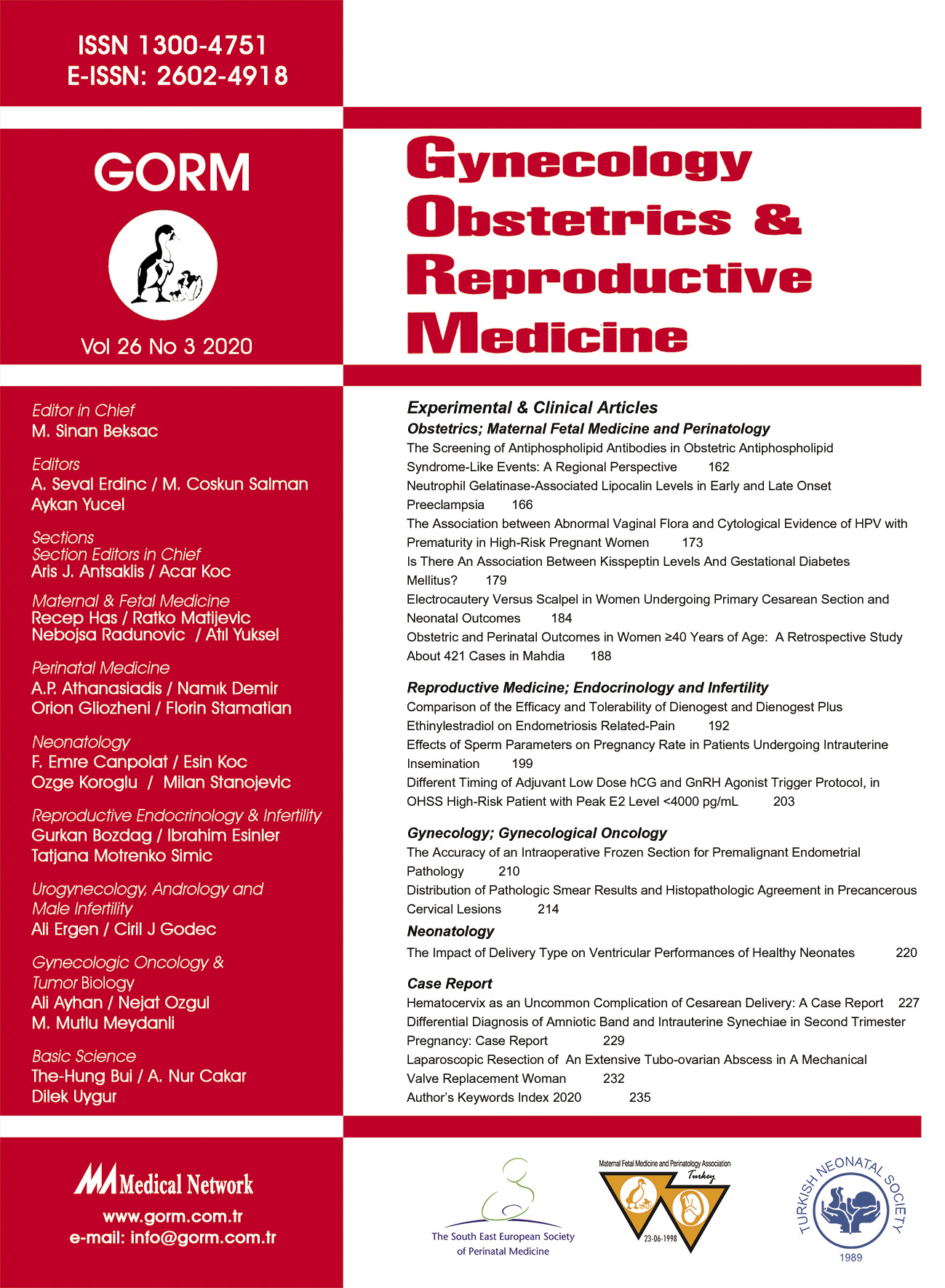Different Timing of Adjuvant Low Dose hCG and GnRH Agonist Trigger Protocol, in OHSS High-Risk Patient with Peak E2 Level <4000 pg/mL
DOI:
https://doi.org/10.21613/GORM.2020.1133Keywords:
Controlled ovarian stimulation, Gonadotropin-releasing hormone agonist trigger, Live birthLow 1, 500 IU Human chorionic gonadotropin, Ovarian hyperstimulation syndromeAbstract
OBJECTIVE: The aim of the study is to compare the live birth rates between 1,500 I.U. of Human chorionic gonadotropin at the time of Gonadotropin-releasing hormone agonist trigger day or 35-36 h later on the oocyte pick-up day, without affecting the risk of significant ovarian hyperstimulation syndrome development in high-risk patients with peak E2 level <4,000 pg/mL
STUDY DESIGN: This single-center prospective cohort study encompassed the period from March 2016 to March 2018 year. A total of 216 patients entered for final analysis, underwent a flexible antagonist protocol, intracytoplasmic sperm injection, and embryo transfer on the 3rd or 5th day in autologous cycles. Patients were randomized in one of two groups: Group A- Dual trigger group - 1,500 IU of Human chorionic gonadotropin at the time of Gonadotropin-releasing hormone agonist trigger day and Group B- 1,500 IU of Human chorionic gonadotropin 35-36 h later, on the oocyte pick-up day. To compare the two groups, we used nonparametric and parametric statistical tests. Significant differences were considered all values of p<0.05.
RESULTS: There is no significant difference between the two (A vs B) groups according to the average number of retrieved oocytes (13.08 vs 14.41 p=0.08), M II oocytes (10.5 vs 10.95 p=0.46), GV (1.24 vs 1.52 p=0.09, the fertility rate (68.46% vs 64.04% p=0.07). The dual trigger group (A) had a significantly higher live birth rate (62.29% vs 42.37% p<0.05) compared with the Gonadotropin-releasing hormone-a trigger group (B). There were no cases of moderate or severe ovarian hyperstimulation syndrome in both groups.
CONCLUSION: Our study shows that in hyper responders where the E2 peak is <4,000 pg/mL, the two approaches to the final oocyte maturation trigger have a correct outcome of the results, both in terms of the results from the in vitro fertilization and the low risk of ovarian hyperstimulation syndrome appearance.
Downloads
Downloads
Published
How to Cite
Issue
Section
License
Copyright (c) 2020 Emilija Zoran Petanovska Kostova, Velentina Sotirovska, Gligor Dimitrov, Snezana Stojkovska, Makjuli Hadzi Lega, Daniela Stojanovska, Nikoleta Stamenkovska, Liljana Simjanovska, Zoranco Petanovski

This work is licensed under a Creative Commons Attribution 4.0 International License.
All the articles published in GORM are licensed with "Creative Commons Attribution 4.0 License (CC BY 4.0)". This license entitles all parties to copy, share and redistribute all the articles, data sets, figures and supplementary files published in this journal in data mining, search engines, web sites, blogs and other digital platforms under the condition of providing references.





